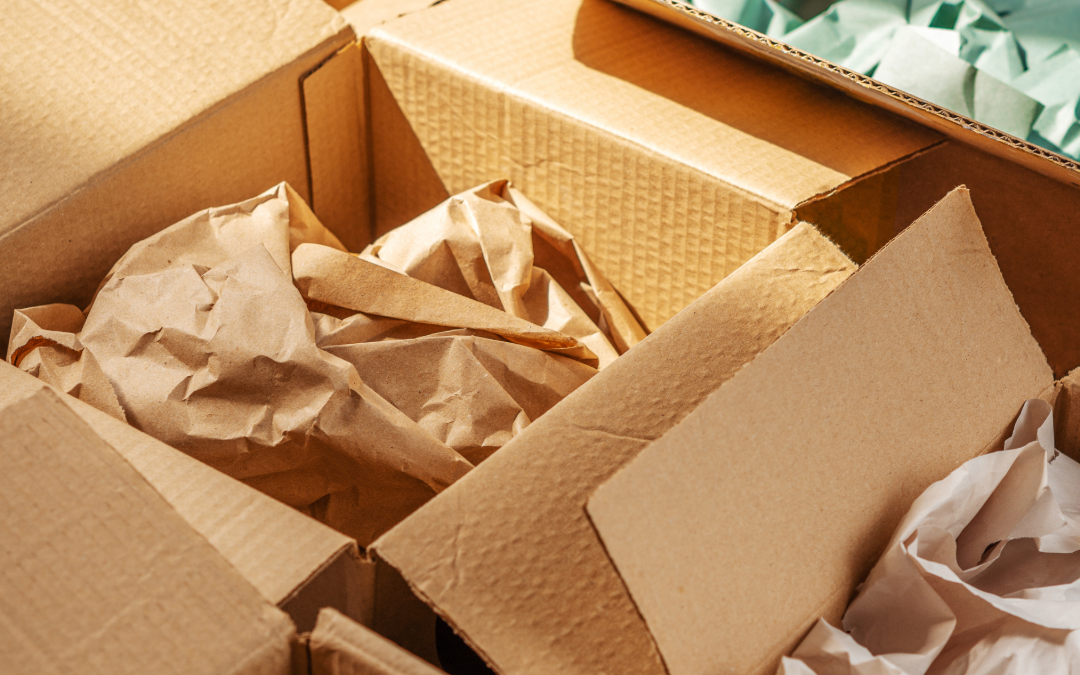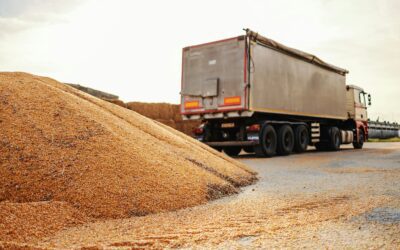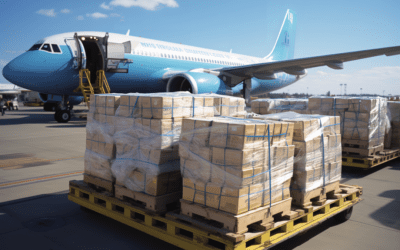Packaging accounts for over $150 billion in annual spending for manufacturers and shippers. It also contributes to 75% of greenhouse gas emissions from the supply chain. However, to alleviate environmental risks, many companies are investing in re-shoring factories, “just-incase” inventories, and qualifying alternative suppliers to build flexibility.
Just-in-Time (JIT) manufacturing aligns with many initiatives within the supply chain. JIT simplifies and improves the supply chain by working with local or regional suppliers. A recent McKinsey survey revealed that 44% of respondents have moved to regional sourcing in the last couple of years.
Article Overview
Void filling
Void fill is designed to fill the gaps within a package to prevent movement and reduce the risk of damage during shipping. This type of packaging inflates shipping costs and also contributes to environmental concerns.
Furthermore, businesses are paying unnecessary postage costs to transport empty boxes, as well as the filler material itself. Void fill accounts anywhere from 40% to 58% of a typical box’s size, ultimately highlighting the need for a more efficient process.

The impact on manufacturers and shippers
According to McKinsey & Company, Manufacturing accounts for $2.3 trillion in GDP, and accounts for 60% of exports. Shippers overspend due to inefficient practices, leading to potential savings of up to 15% in shipping costs. Manufacturers spend over $150 billion on packaging annually. However, if manufacturers were to shift to a more efficient packaging system, it could save them upwards of $22.5 billion.
Given the significant annual cost of packaging and shipping, many businesses have shifted towards a more cost-effective solution that maintains overall expenses. One alternative is the adoption of more efficient packaging strategies.
By optimizing the size and weight of packages, manufacturers can significantly reduce the space required for storage and transportation, ultimately leading to cost savings. For example, FedEx showed that a 5% reduction in customer packaging size would save the carrier 1 million gallons of fuel costs.
Environmental impacts of inefficient packaging
75% of all greenhouse gas emissions fall under Scope 3 emissions, which includes the upstream supply chain as well as the end use of a company’s goods and services. According to the EPA, transportation emerges as the most significant contributor to the average U.S. carbon footprint, accounting for a substantial 29% of greenhouse gas emissions.
The EPA has estimated that containers and packaging make up a major portion of municipal solid waste (MSW), amounting to 82.2 million tons in 2018. While about 54% of MSW was recycled content, 9% of that was burned to decrease waste volume, and the remaining 37% (30,000 tons) was sent to landfills.
The production of packaging materials involves high energy consumption, depletion of natural resources, and release of greenhouse gases. Improper recycling of packaging waste can contribute to pollution and ecosystem degradation.
Why are manufacturers not switching to more sustainable packaging?
Despite the recycling rate in the U.S. improving from 7% in the 1960s to around 32% today, the challenge of inefficient and wasteful packaging remains. Largely due to the amount of non-recyclable packaging available at low prices, and the high cost of recyclable packaging that discourages businesses.
This is relevant as cost reduction remains a top priority for supply chain managers, even when considering environmental investments. Simon Geale, EVP for procurement at Proxima, stated, “Behind closed doors, a lot of CEOs are saying, ‘Well, I know that I’m going to have to do it. But when do I have to do it?’ Mainly because there’s an immediate cost rather than immediate payback.”
The total cost of transitioning the global economy to net zero emissions could cost an extra $3.5 trillion a year in capital spending, according to a 2022 McKinsey estimate. As businesses look for ways to decrease carbon footprint in operations, the question arises: who will pay for the cost of these changes, the buyer or the suppliers? On average, more than one-third of the population is willing to pay more for sustainable products or services. According to Berkshire Hathaway, those who are willing to pay more would accept a premium of 25%. Suggesting a growing consumer readiness to support sustainability initiatives financially.

How can packaging be more efficient and sustainable?
One solution to reduce greenhouse gas emissions is Just-in-Time (JIT) inventory management and manufacturing. Originally coined by Toyota post-World War II, JIT allows a more efficient process due to the company’s only manufacturing what is needed. JIT manufacturing helps organizations control variability in their processes, allowing manufacturers to increase productivity while also lowering costs.
Ultimately, it cuts down on your cost, which cuts down on manufacturing costs and warehousing space, man hours, and everything across the board. By highlighting what’s needed in the production of goods, JIT aligns with the broader goal of reducing environmental impact while also creating operational efficiencies.
However, just as this lean manufacturing production system can add benefits to operations, it can also pose disadvantages. JIT relies heavily on accurate sales forecasting to strategically produce, ship, and store warehouses for what is needed. Making it crucial for businesses to rely on lean production and the reliability of suppliers.
Companies using JIT manufacturing
In 2022, Apple announced its environmental-focused project, which invests $4.7 billion in green bonds to jump-start the development of new low-carbon manufacturing and recycling technologies. Walmart also announced $2 billion in green bonds, with proceeds going towards waste reduction and sustainable transport initiatives in its supply chain management systems.
Target Corporation uses JIT inventory management during its seasonal merchandise, allowing it to reduce inventory costs and optimize shelf space. The company was able to decrease its inventory by 14% year-over-year at the end of 2023.
However, Target’s JIT approach also comes with some trade-offs and challenges, such as relying on accurate demand forecasting and timely delivery from its suppliers, facing potential stock-outs and lost sales if demand exceeds supply or if there are any delays or disruptions in the supply chain.
Amazon recently launched a program called the “Ships in Product Packaging Program,” where it eliminates the need for additional packaging by delivering the product in its original box. Around 11% of Amazon shipments are now delivered without additional packaging. This method reduces waste and also simplifies the unpacking process for customers.
KCH’s Contribution to Sustainable Supply Chains
While not a packaging company, KCH Transportation offers resources and knowledge to guide shippers and manufacturers toward more sustainable and efficient supply chain practices. From optimizing local carriers to determining efficient routes for transportation, KCH Transportation enhances overall supply chain efficiency.
Listen to our recent Shifting Gears podcast episode, The Global Packaging Waste Crisis, to learn more about businesses’ sustainability initiatives!






